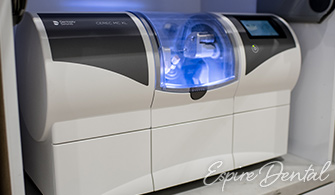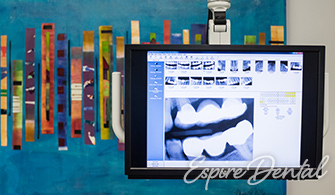










At Espire Dental, we do not use mercury fillings and haven’t used them in years. Doctors Brett and Jen haven’t placed them since dental school. Dental amalgam is made of mercury, silver, tin and aluminum. These fillings actually expand and contract from temperature changes in your mouth, resulting in cracked teeth that often end up…

At Espire Dental we have a digital x-ray system rather than older methods of taking x-rays on film. Similar to most of the world using digital cameras instead of film cameras to get better results and images, the medical world has adapted to digital imaging as well. Digital x-rays are far better as they are…

Getting a dental X-ray might seem intimidating for some. But there’s nothing scary about dental X-rays — especially with new digital X-ray options, which greatly reduce radiation exposure. A simple X-ray checkup can allow your dentist to detect damage that isn’t visible to the naked eye, which is why medical experts recommend regular dental X-rays…